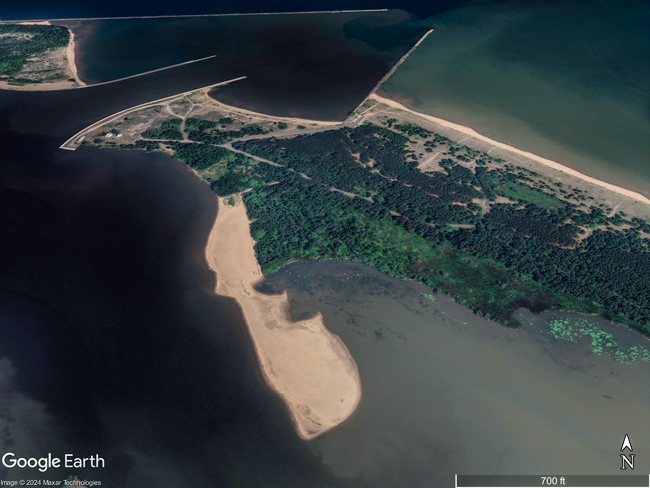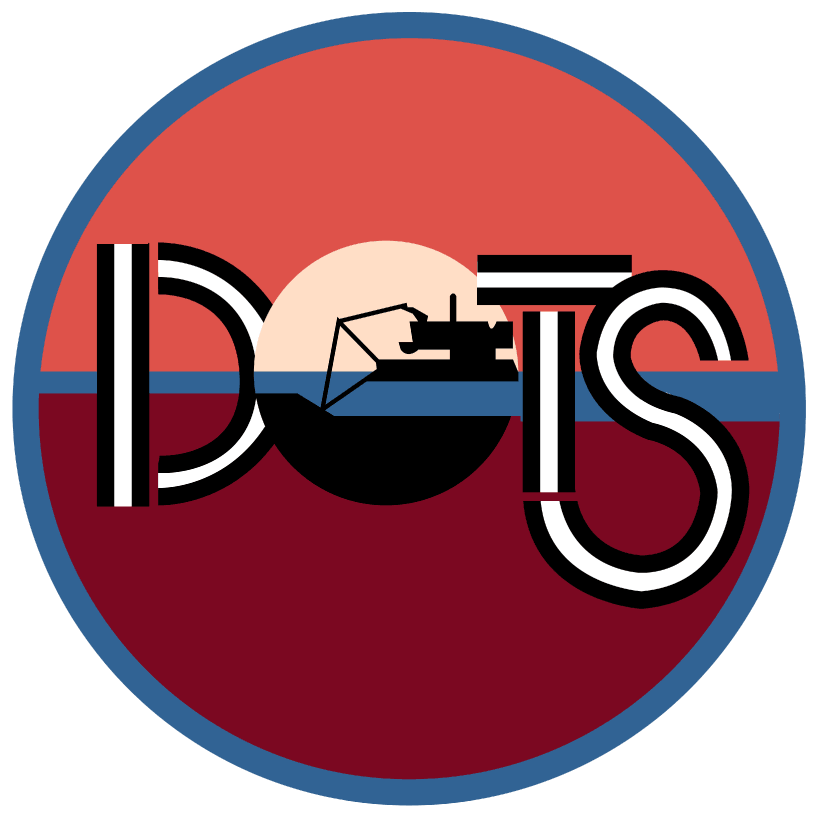Wisconsin Point Piping Plover Habitat Restoration

- Title: Wisconsin Point Piping Plover Habitat Restoration
- State: Wisconsin
- Project type: USACE
- Greater Beneficial Use Area: St. Louis River Estuary
- Focus Area approximate center coordinates: 46.7008, -92.0119
- Nearest Federal Navigation Project: Duluth-Superior Harbor
- Owner: Wisconsin Department of Natural Resources
- Beneficial Use Categories: Island Habitats, Beach/Shoreline Nourishment
- Dredge type: Hydraulic
- Status: Completed
- Keywords: bird habitat, piping plover, island habitat, St. Louis River, Lake Superior
Description:
Wisconsin Point and Minnesota Point together form the Duluth-Superior Harbor, situated in the 12,000 acre St. Louis River Estuary, the largest tributary to Lake Superior. Duluth-Superior Harbor is the largest port in the Great Lakes and the westernmost port in the US with direct access to the Atlantic Ocean. The USACE Detroit District (LRE) maintains the harbor and its associated 18 miles of federal navigation channels at depths ranging from 20 to 32 feet through regular dredging.
In 1989, a large area, including the estuary and harbor, was designated as the St. Louis River Area of Concern (AOC) due to habitat degradation from historic industrial activity, with multiple Beneficial Use Impairments (BUIs) identified. That same year, the City of Superior, Wisconsin, designated a portion of Wisconsin Point as a bird sanctuary and transferred its management to the Wisconsin Department of Natural Resources (WDNR). Today, Wisconsin Point is a popular recreational and cultural landmark featuring three miles of dunes, public beaches and trails, and a protected Chippewa burial site.
The St. Louis River AOC Remedial Action Plan identifies the piping plover as a targeted species. The BUI plan focuses on addressing the impairment of degraded fish and wildlife populations, with the goal of increasing available piping plover stopover and nesting habitat. The piping plover is an endangered migratory shorebird species that uses sparsely vegetated beaches, cobble pans, and sand spits in the Great Lakes region for breeding.
To revive nesting and provide stopover habitat for piping plovers at Wisconsin Point Bird Sanctuary, the Great Lakes Restoration Initiative provided approximately $3.5 million to fund the Piping Plover Habitat Restoration. This project aligns with the broader conservation goal set forth in the 2003 US Fish and Wildlife Service (USFWS) Recovery Plan for the Great Lakes Piping Plover to restore the region’s piping plover population.
As part of a broader initiative to place dredged sediment at various sites in the St. Louis River estuary, LRE coordinated with a team of local and regional species experts, WDNR, and its project partners (including St. Louis River Alliance, USFWS, and US Environmental Protection Agency) to construct a restoration solution at Wisconsin Point using sediment dredged from Duluth-Superior Harbor.
From 2017 to 2019, USACE closely coordinated with project partners to complete analysis and design, aiming to create long-lasting and low-maintenance shorebird habitat at the bird sanctuary that would be resilient to changing water levels and storms. Then, from August to October 2019, the team hydraulically placed 87,485 cubic yards of sediment at Wisconsin Point, dredged from the nearby East Gate Basin of Duluth-Superior Harbor.
The Piping Plover Habitat Restoration successfully created 14 acres of nesting and foraging habitat on Wisconsin Point by using the clean sediment to extend the existing shoreline and stabilized its slopes from erosion. The project team constructed three cobble nesting pans at the site and buried fine sediment beneath sandier sediments, thereby catering to piping plover preferences while fully using a nearby source of available sediment to reduce costs.
Monitoring and adaptive management of the restoration have been ongoing since 2020 and are planned through at least 2024. Bird surveys across the Great Lakes in 2023 indicate the piping plover population is stable and growing. Although the focus of this restoration was on creating piping plover habitat, the project's ecological impact extended far beyond, benefiting the state-endangered hairy-necked tiger beetle, enhancing fish-spawning habitat, and providing new bird-watching opportunities.
The Wisconsin Point Piping Plover Habitat Restoration stands as a testament to dedicated conservation efforts coupled with maintaining economically significant navigational corridors in the Great Lakes. Beyond reviving a crucial shorebird nesting ground, the project exemplifies the potential for ecological restoration through collaboration and innovative use of dredged sediment to construct resilient habitat. By addressing historical challenges and promoting sustainable practices, this initiative contributes to broader conservation goals and showcases the positive impact of interdisciplinary and multi-stakeholder cooperation in biodiversity preservation.
Further readings:
- Bridges TS, Bourne EM, Suedel BC, Moynihan EB, King JK. (2021). Engineering With Nature: An Atlas, Volume 2. Vicksburg, MS: U.S. Army Engineer Research and Development Center.
- St. Louis River Estuary Project.(2014). Wisconsin Point Restoration Site. St. Louis River Estuary: The Stories and the Science.
- USACE. (2018). IIS-USEPA-Wisconsin Piping Plover Habitat, WI. August 16.
- USFWS. (2003). Recovery Plan for the Great Lakes Piping Plover (Charadrius melodus). September.
- WDNR. (2022). Piping Plover Habitat: Restoration Project Summary. March 7.
- WDNR. (2024). Restoring Piping Plover Habitat. St. Louis River Area of Concern. February.
Website links:
- Minnesota Pollution Control Agency, WDNR. (2021). Piping Plover Habitat Restoration, WI. Section 15 of St. Louis River Area of Concern: Addressing the Loss of Fish and Wildlife Habitat. August 30.
- University of Wisconsin Madison. (2024). Wisconsin Point Restoration Projects.
Videos:
Protecting Dunes and Restoring and Piping Plover Habitat on Wisconsin Point. YouTube, Uploaded by WIDNRTV 24 July 2020.
Lessons Learned from the Wisconsin Point Restoration Efforts. YouTube, Uploaded by Minnesota Department of Natural Resources 29 November 2021.
Recovery Progress: Record-Breaking Great Lakes Piping Plover Breeding Season. YouTube, Uploaded by Audubon Great Lakes 14 December 2023.

